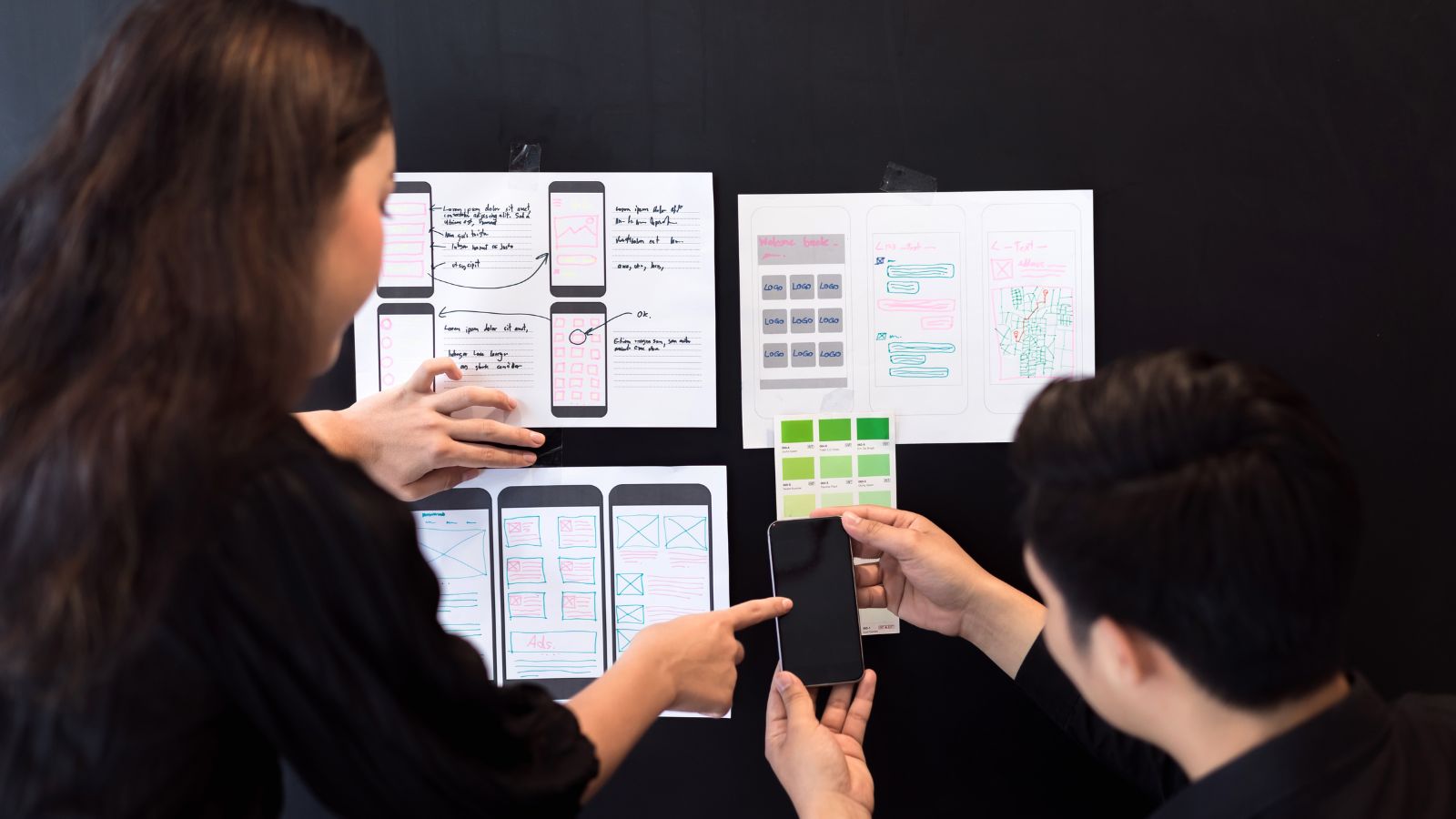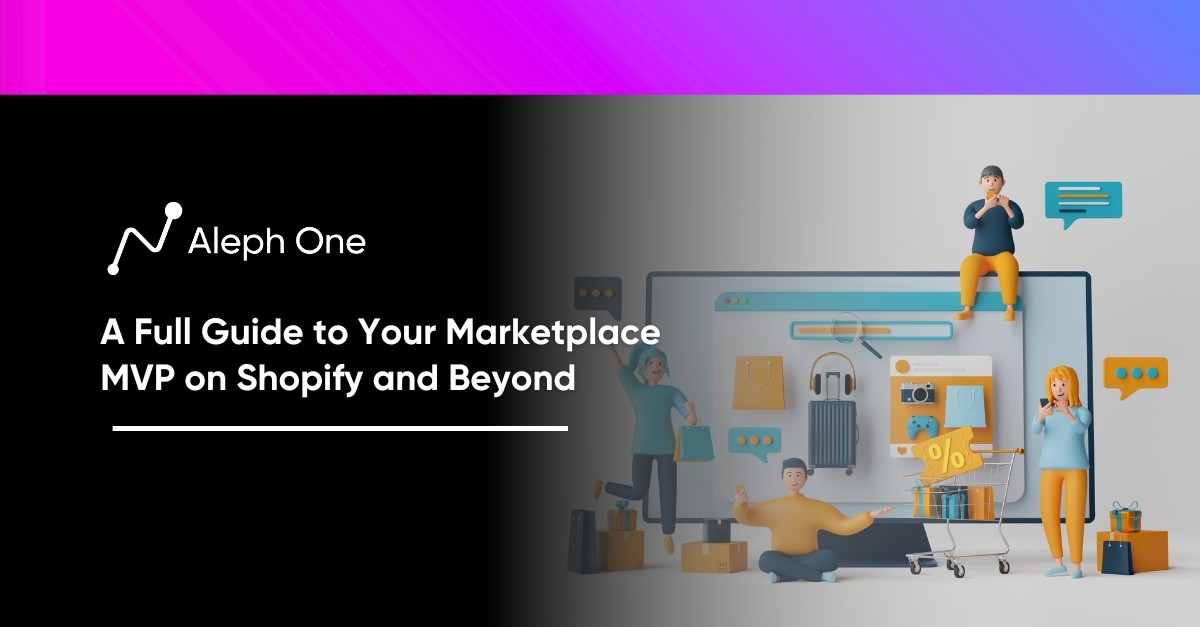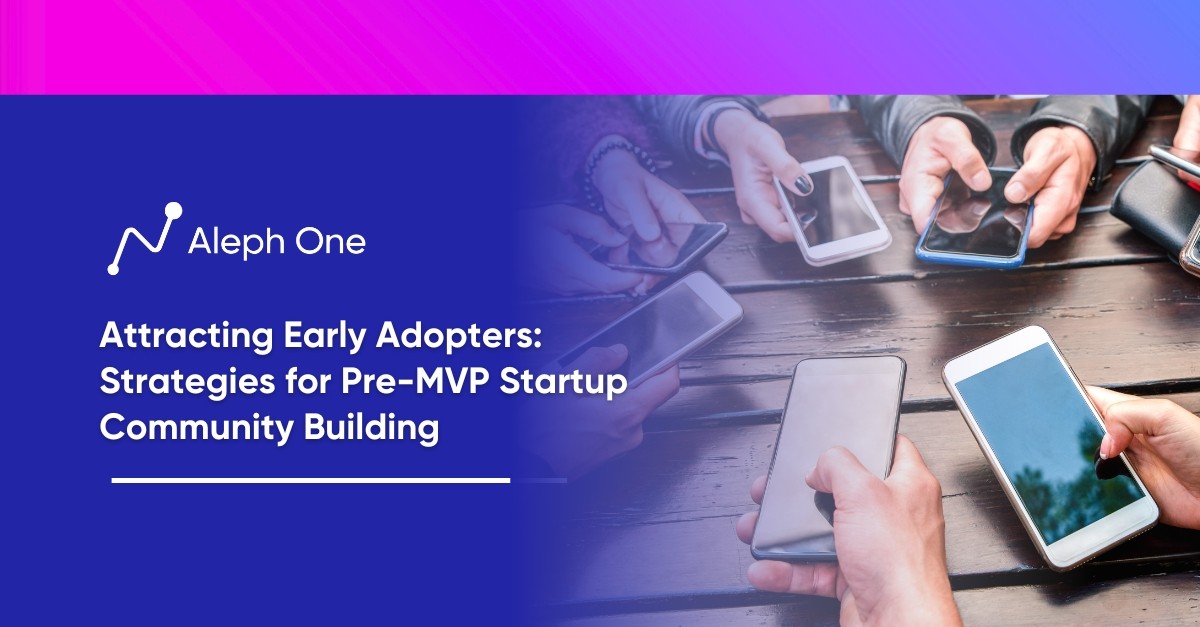Let’s work together to build something amazing. Share your project details and our team will reply to figure out the next steps to your success.

Balancing user experience (UX) and satisfying investors is a game of balance that startups must maneuver. This article will explore how startups navigate this challenge, sharing case studies and failures. From uncovering user core needs through bootstrapped research techniques to the strategic Minimum Viable Products (MVPs) launches and the development of design systems, rapid prototyping, and usability testing.

The Balancing Act: User vs. Investor Needs
For any startup, there exists an inherent tension between satisfying user needs and investor expectations. On one hand, focusing on user experience creates products that customers love. However, investors want to see revenue growth and market share gains. The challenge for startups lies in balancing these competing demands.
Startups Have Struggled to Find the Right Equilibrium
Consider app-based scooter startups like Bird and Lime. These companies raised hundreds of millions in funding from VCs who expected rapid expansion to multiple cities. However, issues like improper parking and injuries led several cities to ban the scooters. By growing too fast, these startups created significant problems for their customers and communities.
Peloton – Refining Digital Platform and Hardware Issues
Other startups like Peloton have been more measured in their growth despite investor pressures. As founder John Foley explained, “Our investors wanted us to hurry up and sell internationally. But we knew we had to fix key parts of the user experience first.” By refining their digital platform and addressing hardware issues, Peloton built a user base before expanding overseas.
Never Lose Sight of the User
Stewart Butterfield, former CEO of Slack, advised startups: “You can compromise on quality, timelines, scope, and everything else except a delightful user experience.” Focus groups, user testing, and other UX research should inform each product decision. Features that drive vanity metrics like daily active users but degrade long-term engagement should be avoided.
Investors play a crucial role in funding startups and holding founders accountable. However, the most successful startups build a culture centered around the user experience. With thoughtful leadership and open communication, startups can satisfy users and investors.
Research: Discovering Your Users’ Core Needs
Researching to understand your users’ needs and pain points is a crucial first step for any startup aiming to create a product people want. Extensive market research like surveys, focus groups, and ethnographic studies can be costly and time-consuming for resource-strapped startups. The key is adopting scrappy, DIY research techniques that uncover your users’ core needs so you can validate product ideas on a tight budget.
Interviews
Interviews are one effective, low-cost approach. Contact your personal and professional networks to find a few potential users to interview. Prepare 5-10 open-ended questions to guide the conversation and follow interesting tangents organically. Take detailed notes and highlight key quotes. As few as 5-10 one-hour interviews can surface significant user insights. Observing users in their natural environment can also be eye-opening. Visit relevant locations and note how people currently accomplish tasks your product will aim to simplify.
Usability Testing
Usability testing lets you validate product concepts quickly. Recruit 5 users that match your target demographics and give them realistic tasks to complete using a prototype. Note where they struggle and see if the product meets their expectations. Services like UserTesting.com make remote usability testing easy and affordable.
Market Data
Surveys also provide useful market data. Though large samples require significant time and money, surveying just 25-50 people can reveal valuable trends about behaviors, pain points and feature needs. Use free survey tools and reach out to your networks to find respondents.
The key is rapidly testing assumptions by gathering user perspectives early and often. One startup that employed guerrilla user research is Slack. By interviewing engineers about their team communication pains and testing their nascent product with small groups, they validated core features like threaded conversations before going to market. This research-backed approach helped Slack soar to a $5 billion valuation within just 2 years of launch.
Creating the Best MVPs: Spotify Case Study
Focusing on a minimum viable product (MVP) is crucial for early-stage startups. An MVP only includes the core features that solve users’ essential needs. This allows startups to launch faster with a streamlined product that delivers value quickly. Once the basics are nailed, startups can iterate by offering advanced features and delightful details.
Spotify’s First MVP
Spotify provides a stellar example of using the MVP approach successfully. When Spotify first launched in 2008, the interface was incredibly bare bones. There were no playlists, no radio stations, no social features. The app simply enabled users to search and stream music. This essential capability solved users’ core needs to access millions of songs on demand.
Improving UX
Once Spotify nailed the fundamentals, they began incrementally improving the experience. Playlists came first, allowing users to save and organize their favorite music. Personalized radio stations followed, serving up recommended tracks based on listening history. Eventually, Spotify added social features like following friends and sharing playlists.
Adding Features that Supported Core Streaming
With each iteration, Spotify expanded upon their MVP without overcomplicating the app. They focused on features that supplemented the core streaming functionality. This strategy enabled Spotify to remain fast and agile even as their product advanced.
Initial Questions When Building an MVP
Startups should follow Spotify’s example by asking: What is the smallest set of features we can build that will solve our users’ primary needs? Release that MVP fast, gather user feedback, and then build on top of that foundation. Resist cramming in extra features that don’t support the core user goal.
The Spotify case reveals how MVPs unlock speed and simplicity. By first nailing the basics then layering on enhancements, startups can better balance user value and investor demands. Releasing an MVP faster satisfies investors’ desire for traction and revenue. But it also allows room for UX improvements that users want as the product evolves. The MVP approach remains essential for startups to build products that both users and investors love.
Design Systems: Creating Efficiency Through Consistency
For early-stage startups, establishing a design system may seem like an unnecessary effort that can wait. With limited resources and small teams, focusing solely on building new features is tempting. However, taking the time upfront to create reusable UI components and consistent design patterns will pay dividends as your product and team grow.
What is a Design System?
A design system is a collection of guidelines, standards, and components that can be used repeatedly to create a cohesive user experience across an entire digital product. This includes elements like colors, fonts, buttons, form fields, icons, and more. By centralizing these UI building blocks into an easily accessible system, startups can streamline design and development.
Benefits of Design Systems
The key benefits of investing in a design system for startups include:
- Efficiency – With reusable components, designers and developers spend less time reinventing the wheel for every new screen or feature. Changes made to components propagate everywhere they are used.
- Consistency – A unified design language and UX patterns create familiarity for users as they navigate the product. This increases usability and satisfaction.
- Flexibility – New components can easily be added to the system without compromising consistency. The system evolves along with the product.
- Maintainability – Code and design resources are centralized, making the product easier to manage and update long-term. Onboarding new team members is also simplified.
Focus on Core Elements
When building their initial design system, startups should focus on nailing the core elements like typography, color palette, buttons, and navigation. Advanced components can come later. Leverage design collaboration tools like Figma to keep the system accessible to the team. Document the standards thoroughly.
While creating a robust design system takes time upfront, the long-term benefits for startups are substantial, from faster iteration to improved user experiences. A design system’s consistency and efficiency allow startups to focus their limited resources on innovation to delight users.
Prototyping: Failing Fast to Succeed Sooner
For early-stage startups, rapidly creating and testing prototypes allows you to fail fast and learn quickly, enabling you to iterate your way to product-market fit. Startups seeking to satisfy users should embrace this concept of constant experimentation through prototyping.
What is Prototyping?
Prototyping is all about translating your ideas into tangible artifacts that can be tested and improved. Rather than spending months building a polished product only to discover flaws, prototypes let you gather user feedback in the early stages when changing course is cheaper. Prototypes can range from low-fidelity wireframes to mid-fidelity design mocks to high-fidelity clickable demos. The key is to create prototypes at the appropriate level of fidelity for each stage of product development.
Prototyping Best Practices
Here are some best practices for effective prototyping:
- Start low-fidelity. Paper prototypes and wireframes are incredibly useful for testing basic user flows and information architecture before investing lots of design time.
- Add fidelity as needed. As the product matures, create mid-fi prototypes in Figma to test the UI and visual design. Later, build clickable high-fi prototypes in InVision or Framer.
- Focus on the critical path. Identify the core user journey and prototype enough screens to test it effectively. Avoid over-scoping.
- Iterate quickly. Use rapid prototyping tools like Framer and Figma’s auto-animate feature to create multiple versions fast.
- Get user feedback early. Conduct usability testing on prototypes to uncover flaws before launch.
- Refine until product-market fit. Continuously gather user insights to refine the prototype until you achieve product-market fit.
With some user research, smart scoping, the right tools, and a testing mentality, startups can leverage prototyping to take the guesswork out of product development. By failing fast and often, you’ll be able to iterate your way to delighting users.
Testing: Leveraging User Insights at Every Stage
Usability testing is a crucial component of effective UX that should be noticed, even during the rapid development cycles typical of startups. While testing may seem time-consuming, the insights it provides into real user behavior and pain points are invaluable – and can save significant time and resources.
Guerilla User Testing
Startups should incorporate some usability testing at every stage of product development. Even simple guerilla user testing with a handful of participants on early prototypes can uncover major usability issues before you invest heavily in developing a complex product. As your startup reaches the beta stage, more formal moderated testing with a larger sample size is recommended to gain quantitative data on metrics like task success rate.
How to Maximize Usability Testing
Here are some tips for startups to maximize the value of usability testing on a budget:
- Recruit participants representative of your target users, not just colleagues. Offer incentives to motivate involvement.
- Set clear test goals and scenarios based on key tasks and flows you want to validate. Resist overcomplicating.
- Use discount testing tools like Validately, UserTesting.com, and TryMyUI to facilitate remote unmoderated tests.
- Complement quantitative task performance data with qualitative feedback on users’ perceptions and emotional responses.
- Focus on discovering pain points and obstacles, not just what users like. The learnings are often more actionable.
- Carefully determine the minimum viable sample size needed for statistical significance based on test goals.
- Synthesize findings into insights tied to specific recommendations to guide design decisions and development priorities.
- Share highlights from tests with stakeholders to secure buy-in for changes based on real user data.
- Retest with new prototypes and variants to ensure usability keeps improving.
Deliver the Best Experience for Your Startup Users
Usability testing provides the customer perspective that can be missing from startup team discussions. By putting their target users at the heart of the product development process through ongoing testing, startups can maximize the value they deliver – and deliver products users can’t wait to use.
FAQ
How can startups ensure they are striking a balance between meeting user needs and satisfying investor expectations without compromising on user experience?
Striking a balance between user needs and investor expectations is somewhat of a tightrope walk for startups. However, this can be achieved by continuously placing the user as the focus point. Startups can do this by conducting regular focus groups, user tests, and UX research to drive product decisions. At the same time, they must engage investors in open communication about the ongoing improvements in their user experience. The key is to create a sweet spot where user needs and business needs meet, leading to scalable growth and user satisfaction.
How is the application of the MVP (Minimum Viable Product) approach effective in aligning user expectations and investor demands?
The MVP approach is an efficient strategy for startups for two main reasons. Firstly, it allows startups to rapidly go to market with a product that serves to resolve the most crucial user needs. This appeals to investors as it indicates market traction and revenue generation. Secondly, the MVP approach can continually be built upon based on iterative user feedback. This ensures that subsequent enhancements cater to users’ needs and are engaging, leading to long-term user retention.
What are the long-term benefits of investing in a design system for startups and how do these benefits contribute to improving user experience and meeting investor demands?
Investing in a design system for startups provides several long-term benefits. A well-structured design system enhances consistency in UX, leading to higher user satisfaction and engagement. This consistency also facilitates faster product development and eases manageability for the teams. For investors, the efficiency engendered by a good design system is an indicator of resourcefulness and scalability potential, which are vital factors in assessing the potential of a startup. In sum, a robust design system allows startups to better focus their limited resources on innovation – a win-win for both users and investors.
Get the latest news and updates from Aleph One in your inbox.



